DOR-1 (phospho Ser363) Polyclonal Antibody
- Catalog No.:YP0626
- Applications:WB;IHC;IF;ELISA
- Reactivity:Human;Mouse;Rat
- Target:
- DOR-1
- Fields:
- >>cGMP-PKG signaling pathway;>>Sphingolipid signaling pathway;>>Neuroactive ligand-receptor interaction
- Gene Name:
- OPRD1
- Protein Name:
- Delta-type opioid receptor
- Human Gene Id:
- 4985
- Human Swiss Prot No:
- P41143
- Mouse Gene Id:
- 18386
- Mouse Swiss Prot No:
- P32300
- Rat Gene Id:
- 24613
- Rat Swiss Prot No:
- P33533
- Immunogen:
- The antiserum was produced against synthesized peptide derived from human Opioid Receptor-delta around the phosphorylation site of Ser363. AA range:323-372
- Specificity:
- Phospho-DOR-1 (S363) Polyclonal Antibody detects endogenous levels of DOR-1 protein only when phosphorylated at S363.
- Formulation:
- Liquid in PBS containing 50% glycerol, 0.5% BSA and 0.02% sodium azide.
- Source:
- Polyclonal, Rabbit,IgG
- Dilution:
- WB 1:500 - 1:2000. IHC 1:100 - 1:300. ELISA: 1:5000.. IF 1:50-200
- Purification:
- The antibody was affinity-purified from rabbit antiserum by affinity-chromatography using epitope-specific immunogen.
- Concentration:
- 1 mg/ml
- Storage Stability:
- -15°C to -25°C/1 year(Do not lower than -25°C)
- Other Name:
- OPRD1;OPRD;Delta-type opioid receptor;D-OR-1;DOR-1
- Observed Band(KD):
- 36kD
- Background:
- function:Inhibits neurotransmitter release by reducing calcium ion currents and increasing potassium ion conductance. Highly stereoselective. receptor for enkephalins.,online information:Delta opioid receptor entry,similarity:Belongs to the G-protein coupled receptor 1 family.,subunit:Interacts with GPRASP1.,
- Function:
- function:Inhibits neurotransmitter release by reducing calcium ion currents and increasing potassium ion conductance. Highly stereoselective. receptor for enkephalins.,online information:Delta opioid receptor entry,similarity:Belongs to the G-protein coupled receptor 1 family.,subunit:Interacts with GPRASP1.,
- Subcellular Location:
- Cell membrane ; Multi-pass membrane protein .
- Expression:
- Detected in oocytes (at protein level). Detected in brain cortex, hypothalamus, hippocampus and olfactory bulb. Detected in oocytes.
- June 19-2018
- WESTERN IMMUNOBLOTTING PROTOCOL
- June 19-2018
- IMMUNOHISTOCHEMISTRY-PARAFFIN PROTOCOL
- June 19-2018
- IMMUNOFLUORESCENCE PROTOCOL
- September 08-2020
- FLOW-CYTOMEYRT-PROTOCOL
- May 20-2022
- Cell-Based ELISA│解您多样本WB检测之困扰
- July 13-2018
- CELL-BASED-ELISA-PROTOCOL-FOR-ACETYL-PROTEIN
- July 13-2018
- CELL-BASED-ELISA-PROTOCOL-FOR-PHOSPHO-PROTEIN
- July 13-2018
- Antibody-FAQs
- Products Images
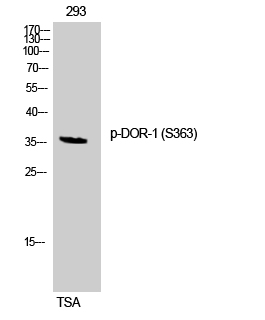
- Western Blot analysis of 293 cells using Phospho-DOR-1 (S363) Polyclonal Antibody
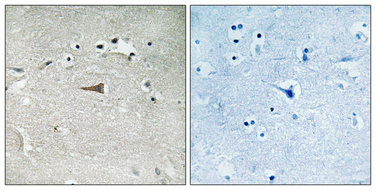
- Immunohistochemical analysis of paraffin-embedded Human brain. Antibody was diluted at 1:100(4° overnight). High-pressure and temperature Tris-EDTA,pH8.0 was used for antigen retrieval. Negetive contrl (right) obtaned from antibody was pre-absorbed by immunogen peptide.
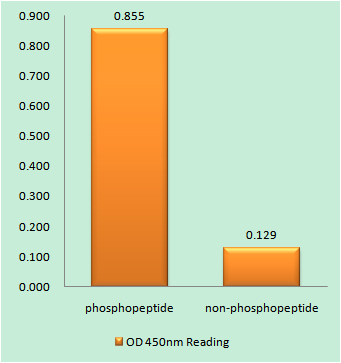
- Enzyme-Linked Immunosorbent Assay (Phospho-ELISA) for Immunogen Phosphopeptide (Phospho-left) and Non-Phosphopeptide (Phospho-right), using Opioid Receptor-delta (Phospho-Ser363) Antibody
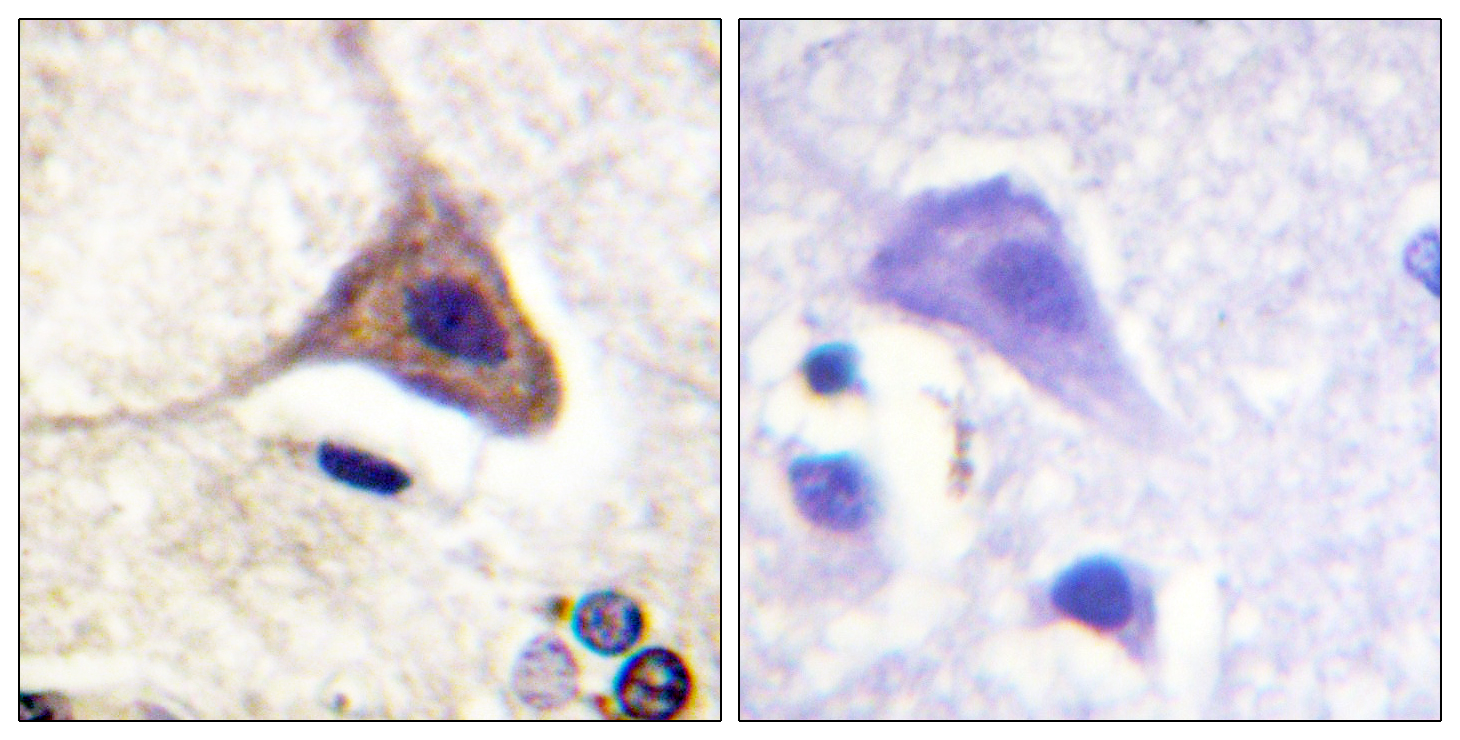
- Immunohistochemistry analysis of paraffin-embedded human brain, using Opioid Receptor-delta (Phospho-Ser363) Antibody. The picture on the right is blocked with the phospho peptide.
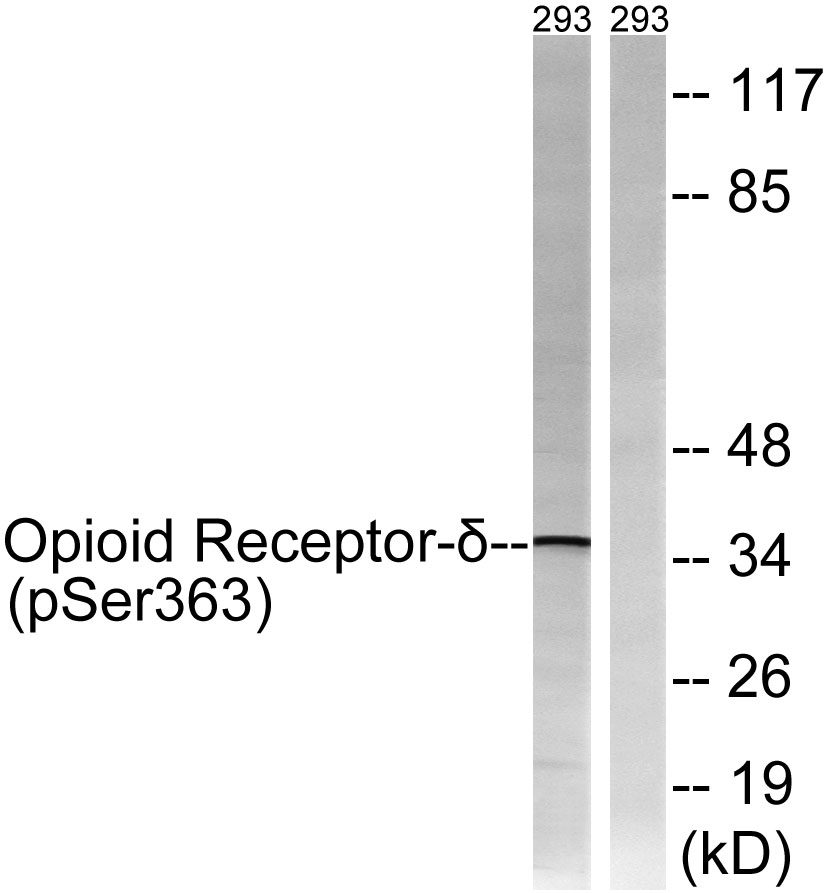
- Western blot analysis of lysates from 293 cells treated with TSA 400nM 24h, using Opioid Receptor-delta (Phospho-Ser363) Antibody. The lane on the right is blocked with the phospho peptide.



